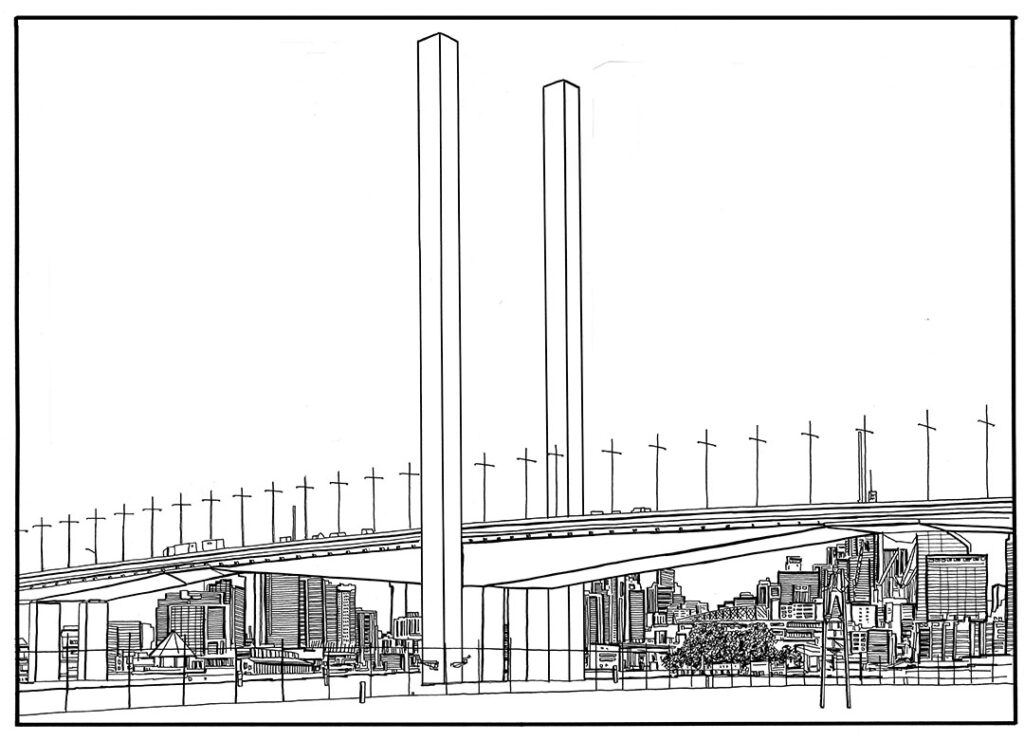
The Bolte Bridge Melbourne
The Bolte Bridge - Melbourne is an iconic engineering marvel, stands as a symbol of Melbourne's progress and connectivity. Stretching across the Yarra River, this architectural masterpiece has become an integral part of the city's landscape and a crucial conduit for both commuters and commerce. In this essay, we will explore the history, design, significance, and impact of the Bolte Bridge on Melbourne and its residents.
A Brief History
Named after Victoria's longest-serving Premier, Sir Henry Bolte, the Bolte Bridge opened to the public on February 4, 1999. The bridge was a part of Melbourne's CityLink project, which aimed to alleviate traffic congestion and enhance transportation within the city. It was designed to connect two major motorways, the West Gate Freeway and the Tullamarine Freeway, effectively linking the western and northern suburbs of Melbourne to the central business district.
Design and Architecture
The Bolte Bridge's design is a testament to modern engineering and aesthetic appeal. The bridge's unique inverted Y-shape, resembling an iconic 'harp,' is a striking feature that sets it apart from other structures. This design not only enhances its visual appeal but also optimizes its functionality by minimizing the number of piers in the water, thus reducing the potential impact on shipping traffic in the Yarra River.
The bridge spans approximately 490 meters in length, with two main spans measuring 173 meters each. It features two major traffic lanes in each direction, accommodating a considerable volume of vehicles daily. Additionally, it includes pedestrian and cycling paths, promoting sustainable and active modes of transportation.
Significance and Impact
The Bolte Bridge has had a profound impact on Melbourne. It has greatly improved traffic flow within the city, reducing congestion and making daily commutes more efficient. The bridge's strategic location connects key commercial and residential areas, promoting economic growth and development in both the western and northern suburbs. It has also significantly reduced travel times to Melbourne's international and domestic airports, enhancing the city's connectivity to the rest of the world.
The bridge has become an iconic landmark, not only for its unique design but also as a symbol of Melbourne's growth and modernity. The stunning views it offers of the cityscape, especially at sunset, attract tourists and locals alike. Moreover, its role as a backdrop in numerous films and advertisements has contributed to its cultural significance.
Conclusion
The Bolte Bridge is a testament to Melbourne's commitment to progress and innovation. Its striking design, crucial role in transportation, and impact on the city's growth and development make it a symbol of Melbourne's aspirations and achievements. As the bridge continues to serve as a vital link for commuters and an iconic structure for all to admire, it remains an enduring symbol of Melbourne's dynamism and connection to the world.
- Inverted Y-Shape: The most distinctive feature of the Bolte Bridge is its inverted Y-shape, often likened to a harp. This innovative design not only adds to its visual appeal but also serves a practical purpose. The inverted Y-shape reduces the number of piers needed in the water, minimizing the bridge's impact on shipping traffic in the Yarra River. This design approach was a result of careful consideration to preserve the river's navigability while still accommodating the bridge's traffic needs.
- High Aesthetics: The bridge's design doesn't compromise on aesthetics. Its clean lines, elegant curves, and sleek, modern appearance contribute to its overall visual appeal. The use of high-quality materials and the attention to detail in its construction have made it an architectural marvel that complements the Melbourne cityscape.
- Iconic Lighting: The Bolte Bridge is a striking sight, especially at night. The bridge features an elaborate lighting system that highlights its architectural features, making it a visual spectacle. The lighting is capable of creating various colors and patterns, often being used to celebrate special events and holidays. This dynamic lighting scheme adds a layer of artistry to the bridge's design, making it a symbol of Melbourne's vibrant culture.
- Pedestrian and Cycling Paths: In addition to its primary function as a road bridge, the Bolte Bridge includes dedicated paths for pedestrians and cyclists. These pathways promote sustainable and active modes of transportation while providing an opportunity for people to enjoy the scenic views the bridge offers. The inclusion of these paths reflects Melbourne's commitment to creating a more inclusive and environmentally friendly transportation infrastructure.
- Environmentally Considerate Design: The bridge's construction incorporates environmental considerations. For instance, it uses noise walls to minimize the impact of traffic noise on nearby residents. Additionally, the use of durable materials and ongoing maintenance practices ensure the bridge's longevity, reducing the need for frequent replacements and minimizing its environmental footprint.
- Seismic Resilience: The Bolte Bridge was designed with Melbourne's unique geological conditions in mind. It is built to withstand seismic activity, ensuring the safety of commuters in the event of an earthquake, which is a relatively rare but essential consideration for infrastructure in this part of the world.
In conclusion, the Bolte Bridge's design is a testament to modern engineering and architectural excellence. Its distinctive inverted Y-shape, lighting, pedestrian and cycling paths, and consideration for the environment all contribute to its iconic status in Melbourne. This bridge not only serves a vital transportation function but also stands as a symbol of the city's commitment to innovation, sustainability, and aesthetic beauty.